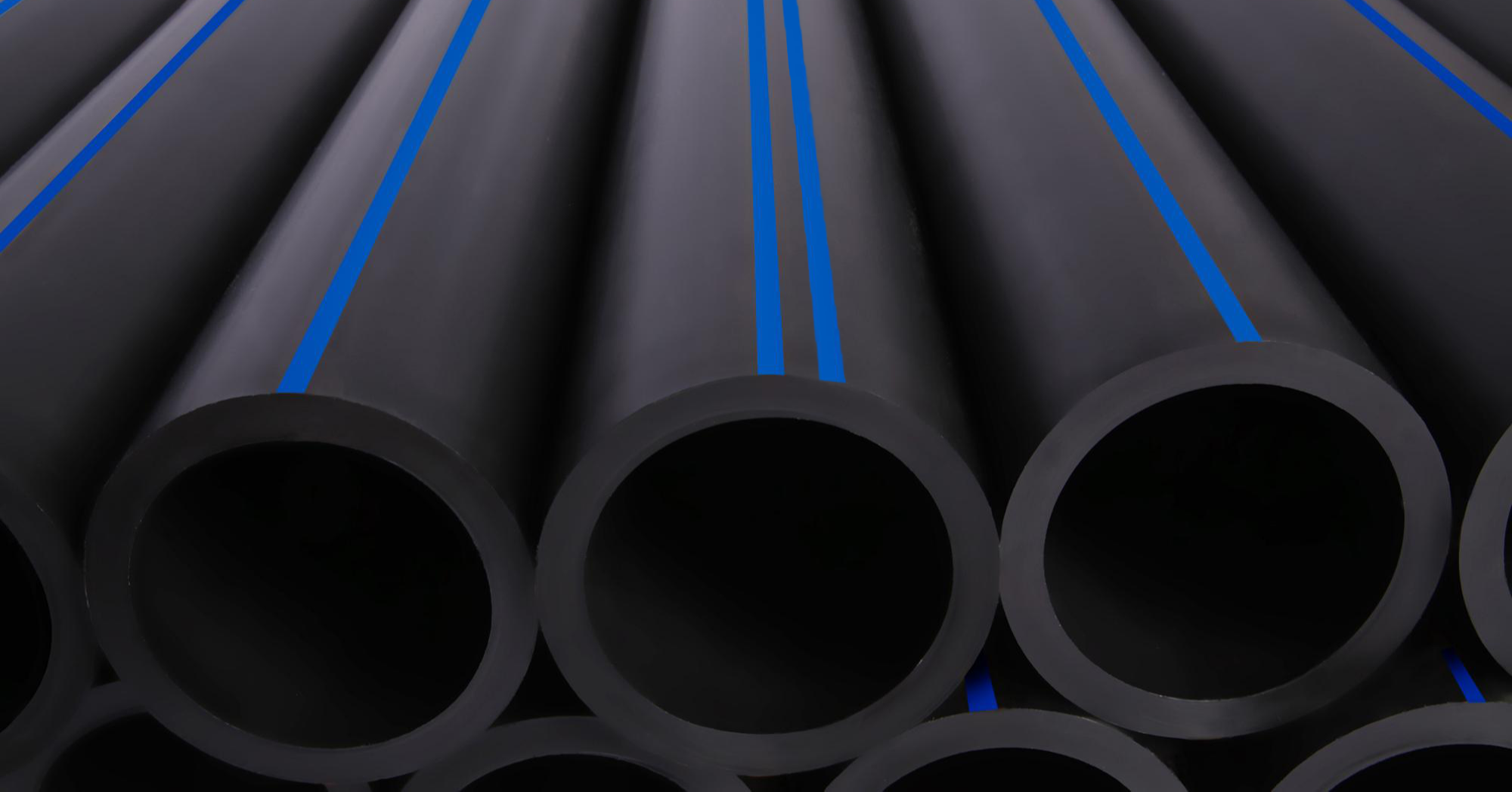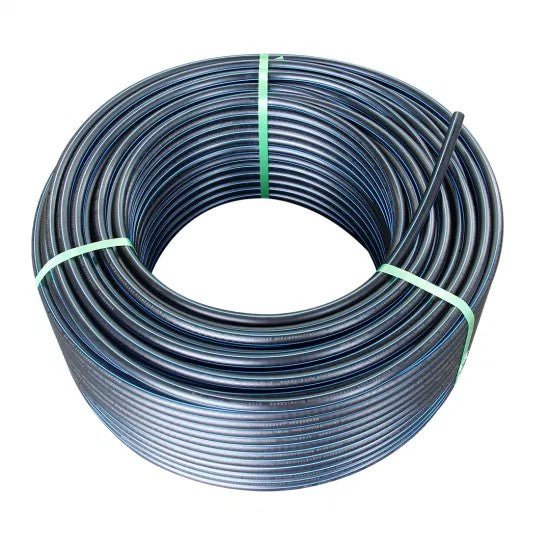Why Partnering with Pipe Supplier American Plastics Midland Ensures Trusted Solutions
Wiki Article
Check Out the Production Process Behind High-Quality HDPE Pipe and Its Applications
The manufacturing procedure of high-grade HDPE pipes is detailed and systematic. It starts with the option of raw products that boost efficiency. Following this, ethylene goes through polymerization to develop material, which is then shaped with extrusion. Quality control is vital, making sure that the final item satisfies stringent criteria. Nonetheless, the trip of HDPE pipelines doesn't finish with manufacturing. Their applications throughout various industries expose a broader value worth checking out.Recognizing HDPE: Residences and Advantages

High-density polyethylene (HDPE) is a functional polycarbonate understood for its toughness and resistance to various ecological aspects. This material shows outstanding tensile strength, making it suitable for demanding applications. Its low-density framework adds to a light-weight item, promoting simplicity of dealing with and setup. HDPE also showcases amazing resistance to chemicals, which minimizes destruction when revealed to extreme materials.
The material's reduced moisture absorption further enhances its long life, making it optimal for use in pipes and storage containers. Furthermore, HDPE is resistant to ultraviolet (UV) radiation, making sure that products maintain their honesty even when subjected to sunshine. Moreover, its versatility enables the development of elaborate shapes without jeopardizing toughness. The environment-friendly nature of HDPE, often originated from recycled materials, contributes to its charm, advertising lasting methods in production. Generally, these buildings and benefits make HDPE a preferred option for various commercial and customer applications.
Raw Product Selection for HDPE Production
The choice of resources for HDPE production is vital to confirm the last item satisfies the wanted specifications and top quality criteria. High-density polyethylene (HDPE) is mostly produced from polymerized ethylene, obtained from nonrenewable fuel sources such as gas or petroleum. The top quality of these feedstocks significantly affects the mechanical and thermal homes of the last HDPE.Ingredients additionally play a substantial role in boosting HDPE's performance, consisting of anti-oxidants, UV stabilizers, and colorants, which enhance resilience and resistance to environmental aspects. The selection procedure should take into consideration not just the chemical composition of the raw products however also their processing qualities to guarantee reliable manufacturing.
The sourcing of raw materials ought to focus on sustainability and compliance with environmental policies, as accountable techniques are crucial in today's market. Ultimately, mindful raw product selection lays the structure for producing premium HDPE pipelines suitable for varied applications.
The Extrusion Refine: Forming HDPE Pipeline
The extrusion procedure plays an important duty fit HDPE pipelines, beginning with meticulous material preparation methods that ensure optimal circulation and consistency. Similarly crucial is the layout of the die, which straight affects the final dimensions and surface quality of the pipeline. With each other, these factors add considerably to the effectiveness and quality of HDPE pipeline production.Material Preparation Techniques
Reliable manufacturing of HDPE pipes starts with thorough material preparation techniques, particularly the extrusion process. Throughout this stage, high-density polyethylene resin is initial dried out to eliminate dampness, making certain excellent circulation characteristics. The material is then fed into the extruder, where it undertakes home heating and melting, changing right into a thick state. This home heating process is carefully regulated to preserve the material's stability and performance. The molten HDPE is compelled via a die, shaping it into a continuous pipeline type. Correct temperature administration during extrusion is crucial, as it directly affects the product's buildings and the last item top quality. When shaped, the HDPE pipeline is cooled down and reduced to specified lengths, ready for succeeding handling and applications.Die Design Importance
Precision in die style plays an important role in the extrusion process of HDPE pipelines. The die serves as the last shaping tool, directly influencing the pipeline's dimensions, wall thickness, and surface area finish. A properly designed die guarantees consistent material circulation, reducing issues such as irregularities and weak points. The geometry of the die need to be enhanced to fit the specific buildings of HDPE, including its thickness and thermal habits during extrusion. Additionally, the cooling rate of the material as it goes through the die can considerably influence the pipeline's architectural honesty. Consequently, purchasing innovative die modern technology is vital for producers aiming to produce top quality HDPE pipes that meet sector standards and consumer expectations.High Quality Control Measures in HDPE Production
Different aspects influence the high quality of HDPE pipeline manufacturing, effective high quality control steps are crucial to assure consistency and dependability in the final item (American Plastics HDPE Pipe Manufacturing). Secret quality assurance methods include extensive material assessment, verifying that the raw polyethylene satisfies recognized standards for pureness and density. During the extrusion process, parameters such as temperature, stress, and cooling time are closely monitored to preserve dimensional accuracy and structural stabilityAdditionally, post-production testing is crucial; manufacturers typically conduct hydrostatic tests to analyze the pipe's stamina and resistance to pressure. Visual examinations for surface area flaws even more improve quality control. Qualification from relevant standards companies, like ASTM or ISO, offers an added layer of integrity. By implementing these complete quality assurance procedures, producers can decrease flaws, improve efficiency, and make certain that the HDPE pipes meet the particular needs of various applications, inevitably bring about consumer contentment and count on the item.
Applications of HDPE Pipeline Throughout Industries
HDPE pipelines are used across different sectors because of their sturdiness and flexibility. In water distribution systems, they assure reliable delivery, while in wastewater management, they supply dependable remedies for waste transportation. In addition, agricultural watering networks profit from HDPE's resistance to rust and adaptability, making it a perfect option for modern-day farming methods.
Water Circulation Equipments
A substantial variety of industries count on high-density polyethylene (HDPE) pipes for reliable water distribution systems. Understood for their durability and resistance to deterioration, HDPE pipes are extensively utilized in community water system networks, farming watering, and industrial applications. Their lightweight nature facilitates very easy handling and installment, lowering labor costs and time. In addition, HDPE pipes can suit different pressure levels, making them ideal for both reduced and high-pressure systems. Pipe Supplier American Plastics Midland. The adaptability of the material permits seamless integration right into existing framework, decreasing the need for comprehensive excavation. HDPE's resistance to chemical leaching guarantees that the water provided remains safe and tidy, making it an excellent choice for maintaining the quality of drinkable water throughout different fields.Wastewater Administration Solutions
Efficient water circulation systems likewise hdpe pipe fittings Midland TX lead the method for ingenious wastewater monitoring options, where high-density polyethylene (HDPE) pipelines play a considerable duty. Renowned for their durability and resistance to rust, HDPE pipelines are ideal for moving wastewater in different settings. Their adaptability allows for very easy installment in intricate environments, reducing the need for considerable excavation. Furthermore, HDPE's smooth interior surface minimizes friction, boosting flow prices and efficiency. These pipes are likewise immune to chemical leaching, making sure that impurities do not compromise the surrounding environment. Industries, districts, and therapy centers increasingly rely on HDPE pipes for their reliability and longevity, making them a preferred selection for contemporary wastewater administration systems. This adaptability emphasizes the essential relevance of HDPE pipes throughout various applications.Agricultural Irrigation Networks
Agricultural watering networks profit substantially from using high-density polyethylene (HDPE) pipes, which offer reliable and reputable water delivery to plants. HDPE pipes are light-weight, making them easy to transport and install, while their flexibility enables various setups in diverse surfaces. These pipes show exceptional resistance to deterioration, chemicals, and UV radiation, making sure longevity in extreme farming atmospheres. Additionally, their smooth indoor surface area minimizes rubbing loss, enhancing water circulation and lowering power prices connected with pumping. The durability of HDPE pipelines, typically going beyond half a century, contributes to lower upkeep and substitute expenses. Consequently, farmers increasingly depend on HDPE pipes to improve irrigation performance and advertise lasting agricultural practices, eventually leading to boosted crop yields and source preservation.Future Trends in HDPE Pipeline Modern Technology
As the demand for lasting and efficient framework expands, innovations in HDPE pipeline innovation are poised to change numerous sectors. Arising patterns include the assimilation of smart modern technologies, such as sensors and IoT capabilities, which promote real-time monitoring of pipe conditions, minimizing upkeep costs and preventing leakages. Furthermore, the growth of sophisticated manufacturing strategies, such as 3D printing, is enabling the manufacturing of complex, tailored pipe layouts that deal with certain project demands.The focus on recycling and round economy techniques is driving the development of HDPE pipelines made from recycled products, boosting sustainability. Enhanced jointing techniques, such as electro-fusion and mechanical fittings, are additionally enhancing setup effectiveness and integrity. The growing focus on environmental policies is pressing manufacturers to take on greener manufacturing processes, guaranteeing that HDPE pipes not just fulfill sector criteria but also foster an even more sustainable future for framework advancement.
Often Asked Questions
Just How Does HDPE Contrast to Various Other Plastic Products?
HDPE outperforms many other plastic products regarding durability, chemical resistance, and flexibility. Its reduced density and high tensile strength make it perfect for numerous applications, frequently surpassing choices in both efficiency and longevity.What Are the Environmental Effects of HDPE Manufacturing?
The environmental impacts of HDPE manufacturing include greenhouse gas exhausts, energy usage, and potential pollution from producing procedures. Additionally, inappropriate disposal can bring about soil and water contamination, raising problems concerning lasting eco-friendly impacts.Can HDPE Water Lines Be Reused?
Yes, HDPE pipelines can be reused. Many centers approve made use of HDPE for handling, transforming it into brand-new items. This reusing adds to sustainability efforts, reducing plastic waste while preserving resources and power in the manufacturing cycle.What Is the Life Expectancy of HDPE Pipeline?

How Do Temperature Level Variants Affect HDPE Pipe Efficiency?
Temperature level variations greatly impact HDPE pipeline performance, influencing versatility and strength. High temperatures can result in softening, while reduced temperature levels might create brittleness, inevitably influencing the pipe's longevity and viability for various applications in varied settings.Report this wiki page